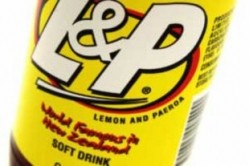Aussies and Kiwis prefer price and brand name over origin

Speaking to FoodNavigator-Asia, Dan Gregory, CEO of the Impossible Institute, said that there is a difference between what customers in the region say they want and what they actually want.
Gregory, who was behind Coke Zero’s launch in Australia—widely considered to be one of the most successful food and beverage launches in the country—revealed that while Australian and Kiwi customers would say that they buy local when asked, their behaviour is not in line with this.
“Typically, customers in this region are behind two things—brand and value. They want a brand name and they want value. The latter is a sum of what you provide and what you charge,” Gregory said.
“And I think there is a tolerance there—where a customer is ready to pay a premium for a brand name. But not such a big premium that it would put the customer off the purchase,” he added.
Gregory said customers in the region, especially Australia, have become visibly more price-sensitive about their food and beverage purchases since the onset of the global financial crisis in 2008.
A complicated marketplace
“Having said that, Credit Suisse last month called Australia the wealthiest per-capita country on the planet. The average Australian has about AU$221,000. In terms of relative wealth, this part of the world is doing well,” he said.
But Gregory believes this wealth will reflect differently across different demographics for product segments. “For example, the baby boomer generation has started retiring. This group is extremely wealthy. While it may not be doing up the house again, it is certainly spending more on better food and premium wine.”
And according to Gregory, it is tough to launch a new product in the Australian market given that the competition is incredibly high—they are multiple brands even in the smallest product segments.
“It is tougher if you follow the regular ways of entering a market. For Australia, you need to enter via a disruptive approach. You need to reinvent your new market approach,” he said, alluding to his Coke Zero launch, where they had to alter the product’s taste profile to be more like Coke, and targeted the young male segment more than the traditional women segment.
Kiwi customers more loyal to home produce
However, compared to Australian consumers, Kiwis are much more loyal to locally made food and beverage products. “I think it is based on how the Kiwis define themselves as not being Australian.”
He said that this drives consumers in New Zealand to stay true to products that define their identity—making it tougher for foreign brands to break and make into this relatively small market.
“You can see this loyalty in their daily purchases. Kiwi customers are very loyal to L&P, a sweet soft drink manufactured in New Zealand,” he said, adding that no similar drink has been able to topple it.
Gregory also pointed to another product, Lift Plus, an energy drink produced by the Coca-Cola Company in New Zealand that commands a 20% market share against the Australasian energy drink V, as an example of a home-made product holding strong against foreign brands.
“Having said that, for new entrants, New Zealand is a good testing market for products before entering the much bigger Australian market. The cultural and historical similarities support such an exercise,” he added.
Editor's note: Do you agree with Dan Gregory, or do you consciously seek out domestic brands? Let us know in the comments below.





